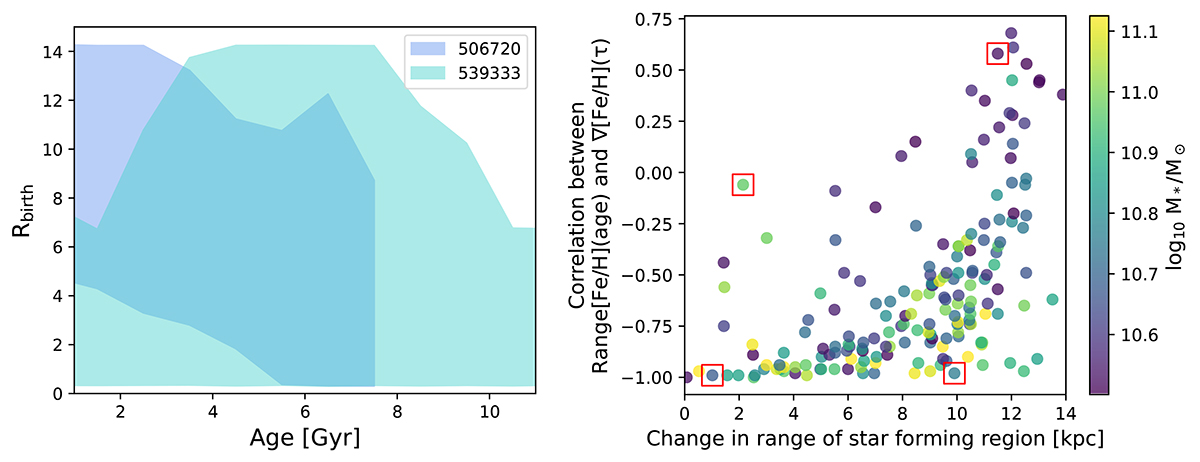Fig. 4.

Download original image
Left: Star-forming region for 2 example galaxies (subhalos 506720 and 539333). The shaded region at a specific age indicates the radial range of stars forming during that time. The star-forming region of some galaxies (such as 539333) can vary in width of many kpc, while other galaxies (such as 506720) form stars in a much more consistent range. Right: Correlation between the scatter in [Fe/H] and the metallicity birth gradient as a function of how much the radial range of the star formation (RRSF) varies over time (defined as the difference between the maximum and minimum range stars are formed in the disk over time), colored by the galaxy’s stellar mass within 30 kpc. A value of 0 indicates that the RRSF was constant over time (albeit potentially covering different radii such as subhalo 506720 in the left panel), while a larger value indicates that the galaxy formed stars over a few kpc some Gyr, and over a much larger region other Gyr (such as subhalo 539333 in the left panel). Overall, the more the range of the star-forming region varies over time, the less likely ∇[Fe/H](τ) can be recovered from ![]() . There is also a gradient with stellar mass, with higher mass galaxies showing a better ability to have their metallicity gradients recovered from
. There is also a gradient with stellar mass, with higher mass galaxies showing a better ability to have their metallicity gradients recovered from ![]() . The 4 highlighted galaxies in red boxes are examined in detail in Figure 5.
. The 4 highlighted galaxies in red boxes are examined in detail in Figure 5.
Current usage metrics show cumulative count of Article Views (full-text article views including HTML views, PDF and ePub downloads, according to the available data) and Abstracts Views on Vision4Press platform.
Data correspond to usage on the plateform after 2015. The current usage metrics is available 48-96 hours after online publication and is updated daily on week days.
Initial download of the metrics may take a while.


